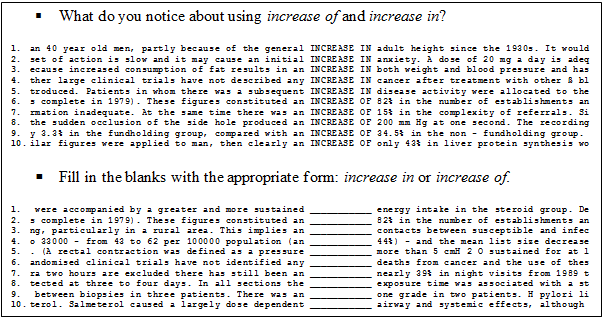 Maggie Charles has taught English for Academic Purposes for more than thirty years and was consultant and contributor to the Writing Tutor in the Oxford Learner’s Dictionary of Academic English and the Oxford Advanced Learner’s Dictionary.
Maggie Charles has taught English for Academic Purposes for more than thirty years and was consultant and contributor to the Writing Tutor in the Oxford Learner’s Dictionary of Academic English and the Oxford Advanced Learner’s Dictionary.
Do you spend hours looking for appropriate EAP examples?
Do you sometimes struggle to answer when your students ask, ‘Can I say…?’ or ‘Is there another word for…?’.
As EAP teachers, we encounter such problems on a daily basis and this where a corpus can help. But where can you find a suitable corpus of academic texts?
The British National Corpus (BNC), available here, covers both spoken and written language and has an academic component. The Corpus of Contemporary American English (COCA) is similar in content. These corpora are very large: the BNC contains 100 million words in total (16 million academic), while COCA holds 450 million words (81 million academic). Another freely available resource is The British Academic Written English Corpus (BAWE), which contains over 6 million words of high quality student writing. The examples I’ve used here come from The Compleat Lexical Tutor, which provides several smaller academic corpora. For teachers and students of EAP these corpora provide a huge store of examples of academic English as it is actually used.
What sort of help can a corpus provide? The corpora above come with their own built-in software, called a concordancer. To consult the corpus, you type in a word or phrase and the concordancer searches the corpus and presents every instance with its context in a line on screen. The search item appears in the centre, with a few words either side. Here is part of a concordance on emphasis from a 6+ million word general academic corpus. I’ve selected and sorted the lines by the first word to the left to show some useful adjective-noun combinations.

My student wrote this:
Brown (2010) put high emphasis on the failure to distinguish between permanent and temporary shortages.
Studying the concordance showed her that the combination high emphasis wasn’t present in the corpus and gave her three possible alternatives (great, particular, special).
Concordance data like this has many applications in teaching writing. At the pre-writing stage, the concordance above can be used to help students notice collocations and chunks of authentic language which they can use in their own writing e.g. placed/laid great/particular emphasis on or with special/particular emphasis on. You can also make a concordance on key terms from the students’ own writing topic, which will retrieve phrases that are frequently used when discussing the topic. By studying the concordances, students can identify typical phrases associated with the topic, which reduces their reliance on literal translation in their writing.
At the post-writing stage, using concordances makes it easy to construct short tasks to deal with problems that have arisen in students’ texts. You can make concordances on two contrasting terms to focus students’ attention on important differences. The concordances below come from the BNC medicine corpus (1.4 million words) and highlight the difference between increase in and increase of. Most corpus software allows you to make gapped concordances so that you can check students’ understanding of the teaching point.

You can use concordance data in many ways: before class you can prepare tasks for your students or check your own intuition about academic language; in-class you can ask students to study concordances on paper or respond to student queries as they write; after class you can supply short concordances to individual students or devise class tasks to deal with more general problem areas. Studying concordances either individually or in class helps students notice grammatical and lexical patterning and improve their own writing.
In addition to gapped and ungapped concordances, corpora can also provide sentence length examples, lists of collocates and short extracts. You don’t have to worry about making up examples or spend time reading through multiple sources to find suitable texts. Using an academic corpus in your students’ field(s) you can just input an appropriate search term and quickly retrieve a wealth of material.


[…] Source: Using Corpora for EAP Writing Development | Oxford University Press […]
Can you use corpora to study/ notice topic sentences?